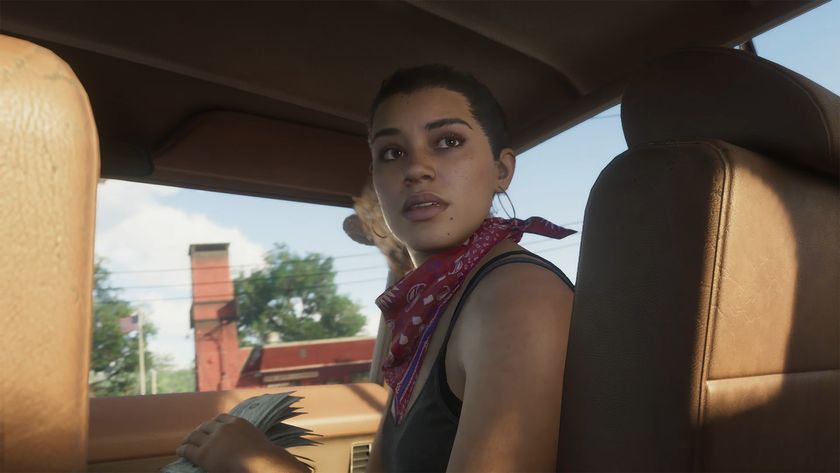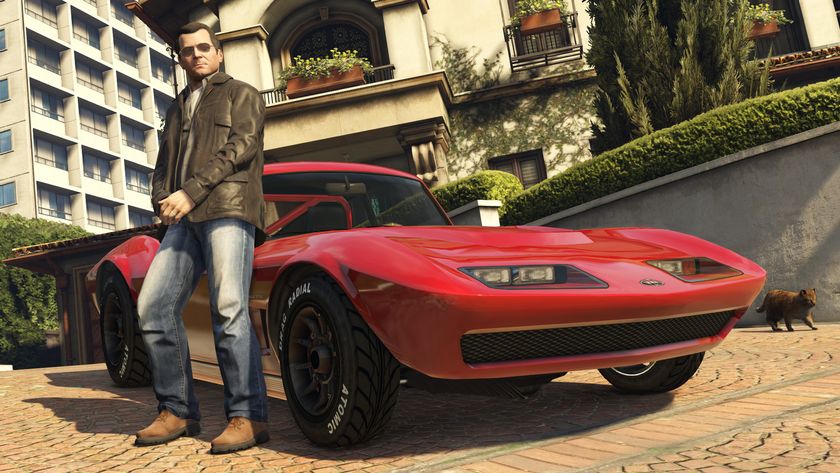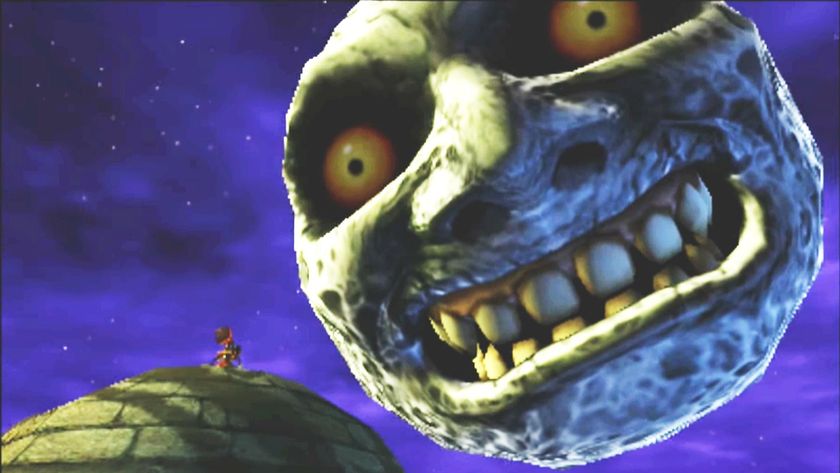Rayman Origins, Beyond Good & Evil and the state of the games industry: An interview with Michel Ancel
Rayman's creator and lead writer Gabrielle Shrager chat about their creative process, plans for BG&E II and the importance of fun
GR: Since you mention Beyond Good & Evil, there's something I’m curious to know. It didn’t do so well initially in terms of sales, but there have been several pushes over the years – giving away PC copies for free, the HD version, etc. Have you seen the audience for it grow at all? Has it become more of a success, in your opinion?
MA: Yes, of course. And it’s good to see that people are pushing the game by themselves. The people that love something, they can be… (speaks in French to Shrager)
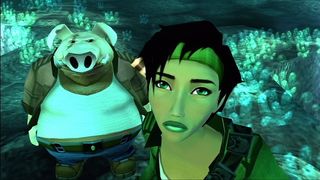
GS: They become proselytizers, the people love the game so much that they’ve been selling it to other people just by word of mouth. And it becomes a cultish game just of its own volition.
MA: The thing is, this game, when I worked on it, had kind of a political dimension. So for me, it has this serious aspect, it has this kind of depth, and it’s very cool to see that people are sensitive to the fact that there could be a game with a message. And I think that now, very good games have come before and after Beyond Good & Evil, and it just gives us the message that this kind of game is the kind of thing that can appeal to a lot of people. And they are not the no-brain people that people outside of our industry think we are, you know, just things with no brain who don’t care about the art, don’t care about the story. That’s exactly the contrary. I think most of the games that really have success, games that have a certain depth – my feeling is that Beyond Good & Evil is part of that.
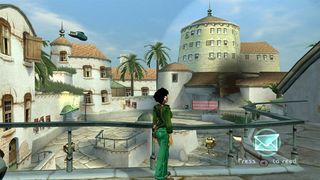
So, yes, but it’s more than the commercial success. It’s a very positive response from a lot of people.
GR: Given how much the world has changed since 2003, do you think the sequel to Beyond Good & Evil will have a similar message?
MA: No. We’ve already worked on the sequel, and the idea is to be deeper in this direction, and to have this… involved storytelling. That’s the main thing that we have to focus on.
Sign up to the 12DOVE Newsletter
Weekly digests, tales from the communities you love, and more
GR: Can you talk about what’s going on with the sequel?
MA: Yes, we’ve been working on it for a long time, but we’ve had some technical issues. It’s a complex game. The first Beyond Good & Evil, when I sent the technical document to Sony, it was the time of the Emotion Engine on the PlayStation 2. We had the feeling that we could do whatever we wanted. We sent them the document, it was about planets, going from planet to planet, towns to towns and all these things. But in the end, what we were really about to do was far less than what we wanted.
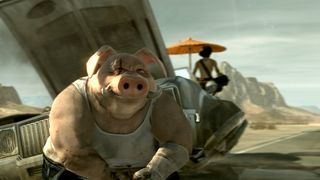
And of course, the scope of Beyond Good & Evil is large – you’ve got the city, the ocean, the moon and the space ship. But the space ship was designed to go from planet to planet, and it was frustrating to have those limitations. And my thing is that we really want to make the game that was previously imagined, with all this feeling of traveling. Mass Effect did a good job on that side, and I think that there are a lot of things to do to continue in that direction, with storytelling and a massive world.
GR: Is that why it won’t appear on the current generation of consoles?
MA: Yeah, yeah. That’s the reason.
GR: Does it feel constraining to work on something like King Kong, that’s somebody else’s vision?
MA: It’s different, because then you don’t focus on creating the world, you focus on how to make it very immersive, and true to the vision of Peter Jackson. To me it was cool, because it was just after Beyond Good & Evil, which was a real creation, and it’s a lot of work to create everything. Here it was half the work, because Peter Jackson showed us a lot of things. He was very proud of the world of King Kong.
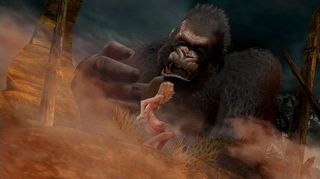
And we went in a room like that, and all around the room was all the concept art of King Kong. And each concept art, he detailed each concept art. And when he detailed those concept arts, he said that all of these things will not be in the movie, because the movie’s two hours long – but maybe in the game, you can use it. So it was always not in the movie, but could be in the game. … So it was cool, because we had all these things. So each game is different from this point of view.
GR: Seeing the way that you guys have interacted today, and being in your studio, it’s obvious that you’re very jovial with each other. Is it the same with a project like this and the Rabbids games as it is with more serious matter, like BG&E and King Kong?
MA: You know, it depends, because you can work on a very serious game and have a lot of fun. It really depends on the connection between the people. It’s like that in every kind of work. Maybe you, as journalists, you’ve seen different things, and you work differently with the people around you depending on their personality. But yes, of course, this kind of game, we really need to have fun.
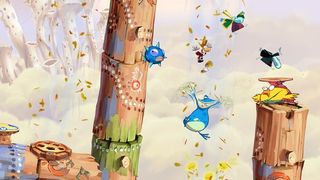
We can’t lie. You can’t work on this kind of game without the fun of working on it. So we have Dick Man (points across the room at an animator infamous for leaving obscene doodles around Ubisoft Montpelier's studio), which is drawing dicks everywhere. It’s crazy.
GS: And it translates somehow, without the XXX rating, into the game.
MA: One day she had like 20 dicks around her screen… different shapes, and different colors, and different activities.
GS: It was helping me concentrate, obviously.
GR: Is it difficult to not be influenced by all the dicks?
MA: (Laughs, points at a Teensy) Look at the nose of that guy! (laughs) Don’t tell that.
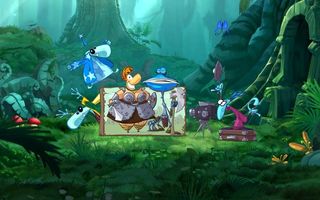
Above: Sorry, guys, but we couldn't not tell it
GR: Would you agree with the statement that a lot of the time, 2D cartoon art can be more relatable than “realistic” 3D graphics?
MA: You mean feeling involved in the game, with 2D? My feeling is that it’s just a matter of distance between the results and the idea. With 2D, you have seen that if we want to draw a skeleton, it’s a matter of seconds. With 3D, it’s a matter of maybe minutes, or maybe hours, between the idea and… but with new 3D tools, I believe that 3D’s going to be closer to direct ideas. If you look at most of the media, you look at the movies, for example. Most of the movies take their stories from books. Books are written by people alone, with no constraints, with their own personality. It’s not a matter of discussing with 20 people what to do. It’s just doing something. So it’s very pure, in terms of creativity.
We are very committed to the artists, their input is directly put in the game. But in 3D, it’s coming, because with new tools, like… I can’t really mention them, but there are tools that help you really create content quickly, so it should be better and better. That’s my thing.
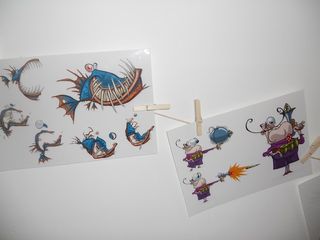
Above: More concept art at Ubisoft Montpelier
GS: You obviously don’t have to worry about the “dead eye.” It’s called photorealistic, but is that actually going to make us identify more and more with these characters? With LA Noire, do we feel more immersed because they’ve gotten that technology into it? I don’t know.
When you look at the popularity of Cartoon Network, when you see how many adults have gone back to watching cartoons, it’s much easier to identify with the whimsical, and the original and the artistic than it is with someone who you’re supposed to identify with because he’s supposed to look like the bad guy, or he’s supposed to look like somebody you should recognize, whereas these are completely invented. So you make your own relationship with them.
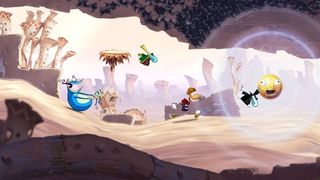
GR: Was the multiplayer something that was planned from the start?
MA: Yeah, yeah, definitely. That’s the main thing. Without the multiplayer, we would not have been doing the game. Making just a high-definition game for me is not interesting.
GR: What do you hope that the multiplayer component adds to the overall experience?
MA: If you play alone, and then you play with friends on the same levels, the experience is very different. So it’s a way of having a good replay value, because you can unlock the levels, maybe you have friends at dinner and you want to play with them, you can play from the beginning, or pick up any level and make them play. Because you can save them, you can try other levels, and maybe…
(At this point, Ancel is briefly distracted by a group of players shouting in the background.)
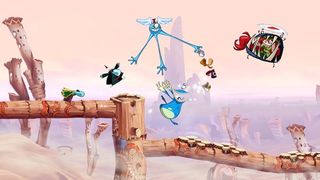
MA: And you see, that’s the kind of reaction we want to imagine people being able to have in their living room. It’s the way social games could go. Not having people alone at home with their iPad, but playing all together, directly.
GR: Do you envision the game as being playable online?
MA: I would say yes, but that’s not the main… it would be a good addition, that’s my feeling. But it’s not as essential as sharing the experience directly.
Most Popular





